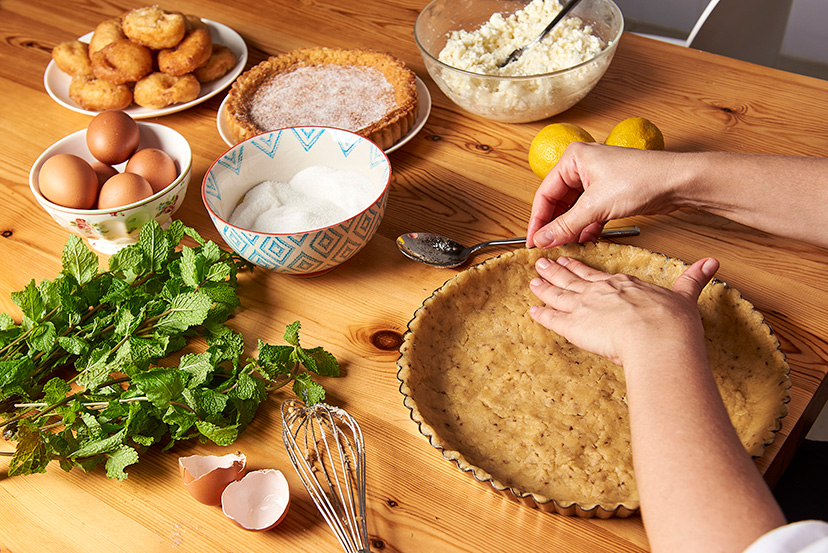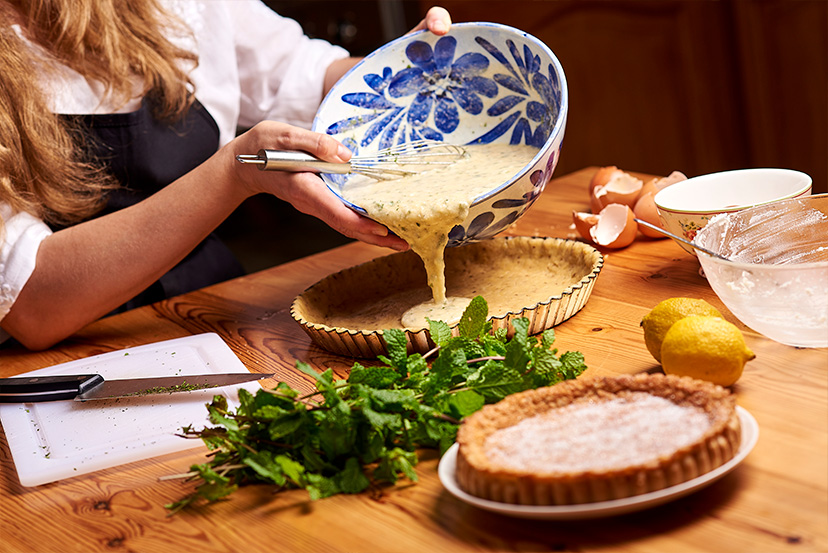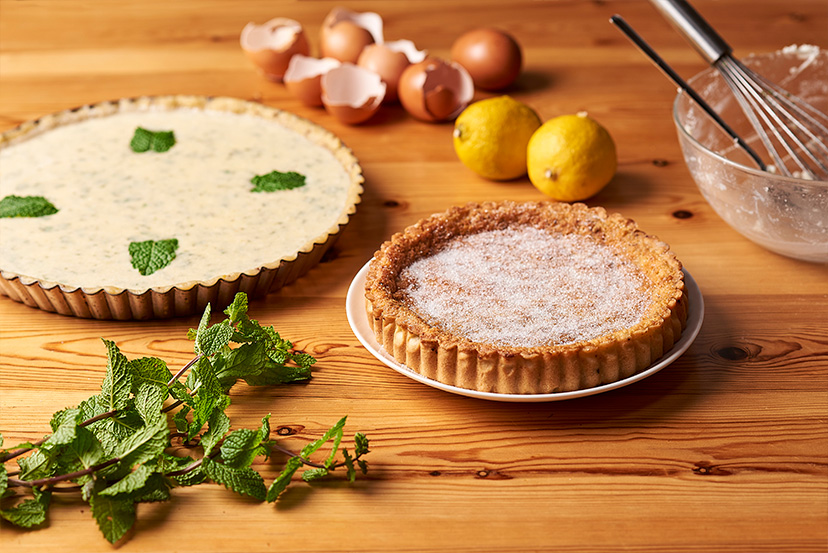One of the main features that identify a people is their cuisine. The typical dishes that are prepared and cooked year on year and which withstand the passage of time, are the clues to discovering and appreciating a culture that has been handed down through generations to the present day. Ibiza’s culinary tradition provides an extensive menu of both sweet and savoury dishes that are really worth tasting and enjoying. All have one thing in common, in that they are based on local produce which marches in time with the way the dishes have changed and developed.
When spring arrives along with fine weather, this usually coincides with the Easter celebrations, and during Easter Week, Ibizan kitchens are filled with the aroma of mint and anise, the bright yellow of local farmyard eggs, and fresh white homemade cheeses. These are the basic ingredients of ‘flaó’, a sweet dessert with a long history that was traditionally served on Easter Sunday, but which today is eaten all year round.
The story of this flavoursome, delightfully perfumed cheesecake goes back to the 13th century when the Catalan troops settled on the island putting an end to the long Muslim domination of Ibiza. Its name derives from the Latin word “flado” which was documented for the first time in the year 587, referring to a pastry filled with cheese and eggs. What makes Ibizan ‘flaó’ different from other similar recipes found in this part of the Mediterranean is the spearmint used in the filling, one of the many types of mint found in Ibizan gardens and which gives it that unique touch of authenticity that is so appreciated.
The secret of ‘flaó’ is in the quality of the raw materials used to make it, fresh country goat’s and sheep’s cheese and the care and patience invested in making it. It is essential to get the pastry just right, as this is the main difficulty with this culinary preparation. Only experience and a mix of the right amounts can guarantee that the base of the ‘flaó’ will come out right, and making it requires the attention of all five senses, and then it is left to the oven (if possible, a wood-fired one) to deploy its potential flavour.
As is the case with all the traditional Ibizan dishes, there is no one true recipe for ‘flaó’ and there are as many versions as there are homes that prepare it, with their own special secrets that have been handed down through the generations. The quality, texture and humidity of the cheese used in each cake will affect the final result of this dessert which has all the features of a fusion dish, and which is a clear example of the integration of the different cultures that have passed through the island and left their mark on its history.


